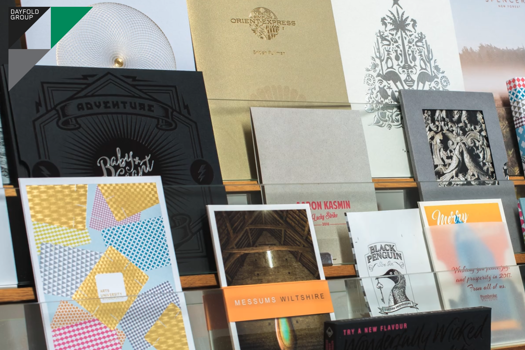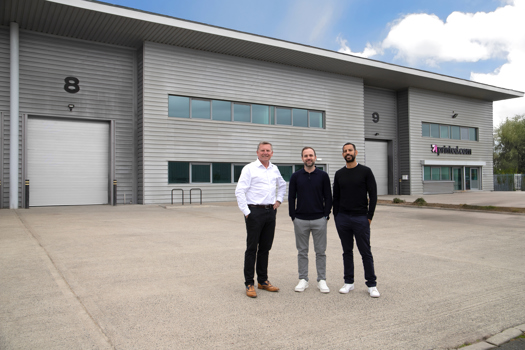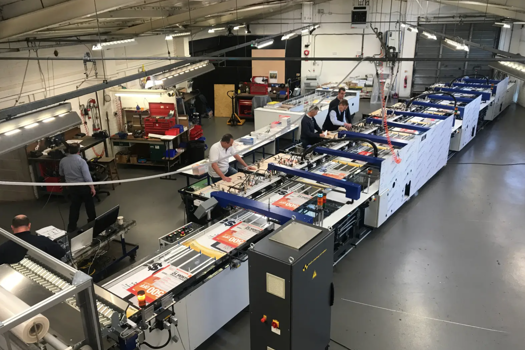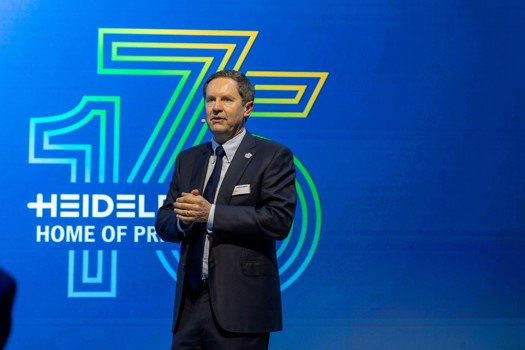The roll-to-roll/flatbed hybrid printer was installed at the large-format print specialist's Cardiff factory by EFI reseller and long-term 3 Sixty partner CMYUK last week.
The highly productive 3.2m-wide h5 prints eight colours plus white, with a nine-layer printing capability in a single pass at 1,200dpi resolution and speeds of up to 390sqm/hr.
3 Sixty’s machine replaced a four-year old, 2m-wide EFI Vutek H2000 and joined a battery made up of EFI and Durst machines: an EFI Vutek GS3200 and a Durst Rho P10 250 HS Plus UV hybrid and a Rhotex 325 dye sub.
Managing director Richard Inkin said he had been looking to replace the H2000 for a while as the reason the firm originally installed it was to cater for quick, short runs, but that increasingly its work had been moving towards quick, longer runs – and this trend had significantly accelerated as lockdown restrictions eased.
“If you had asked last year if I would buy a machine in the middle of a world pandemic, I probably would have said no. But it was the right thing for us to do, and the more I looked at the H2000 it was clear it wasn’t being used in the right way. So, replacing it with a machine that runs probably five times faster will save us costs.”
The environmental credentials of the new machine and its ability to print on thinner materials was also appealing, but the overarching driver was controlling costs.
The 26-staff business financed the purchase through a CBILS loan, with the support of CMYUK, which it also used to refinance a small number of other non-printing items to consolidate its borrowings.
“We first went over and saw it last November and were then umming and ahing about it and then Covid happened, but it was the right time and the right opportunity.”
He said the that since the pandemic broke, the business had been looking at ways to become more efficient, increase speed to market and keep overheads low.
He said that the way the deal was structured meant it was a “a little bit of a no brainer really” as it enabled to business to achieve its objectives, while simultaneously increasing capacity and reducing the number of hours it needed to operate.
Prior to the pandemic around two-thirds of the circa £4m turnover business’s work was retail, with the remainder split between outdoor events, office interiors and working with high-end designers on specialised fabric dye-sub projects.
Pre-Covid it was also looking to expand into dye-sub on substrates such as wood and aluminium, but has put that on pause for now.
Regardless though, Inkin said the business had been “phenomenally lucky’ through the pandemic so far, largely because its longstanding reputation for printing onto plastics and adhesives, which meant it had been swamped with requests for floor graphics, at some points producing more than 100,000 per week.
When lockdown was announced the business went down to a skeleton crew, but started to bring people back from furlough fairly quickly and was up to around 20 staff by May.
However, Inkin stressed that like any business it had faced challenges as a result of the pandemic, but had remained positive.
“All we’re trying to do during Covid is improve our efficiencies throughout the business and this is one of those aspects, but then so is installing Office 365 so we can have Teams meetings. That wasn’t a significant investment in terms of value, but it was compared to the amount of time driving around the country seeing people.”
While he said he was optimistic for the future, he was alive to the challenges that lay ahead.
“All we can do is control costs, deliver what clients require now, and keep a close eye on how that changes in the coming months.”










